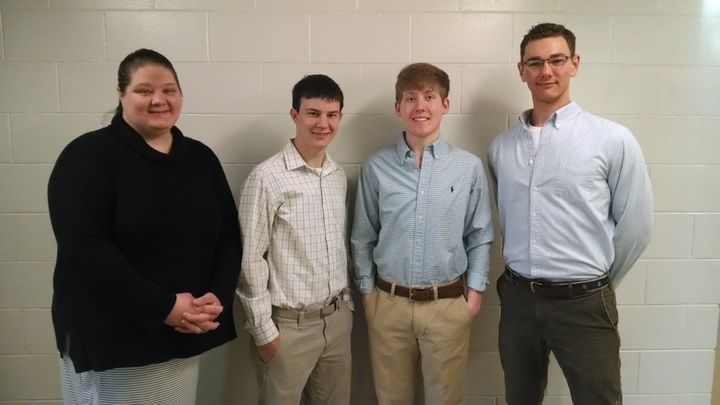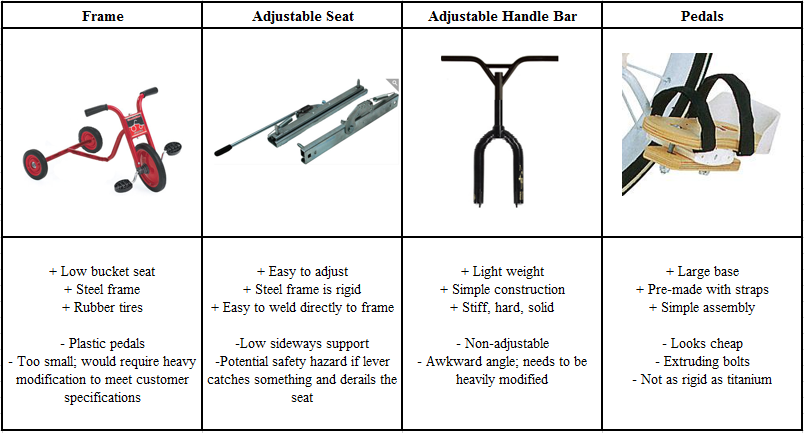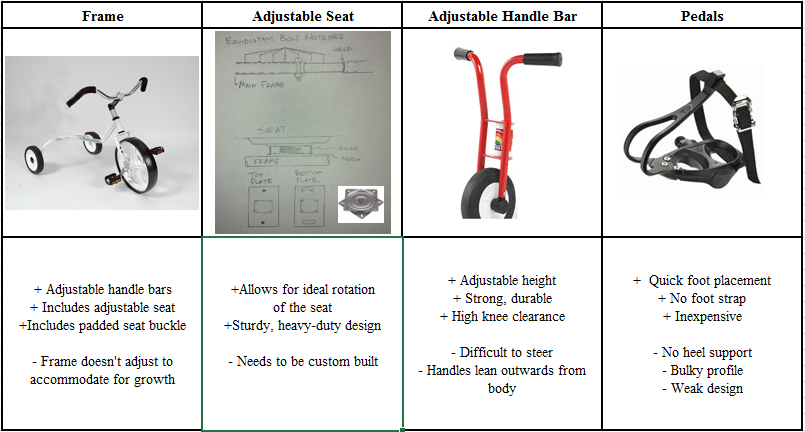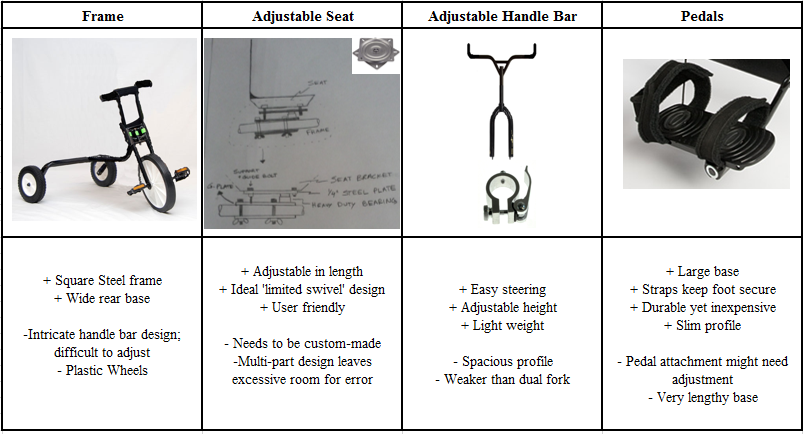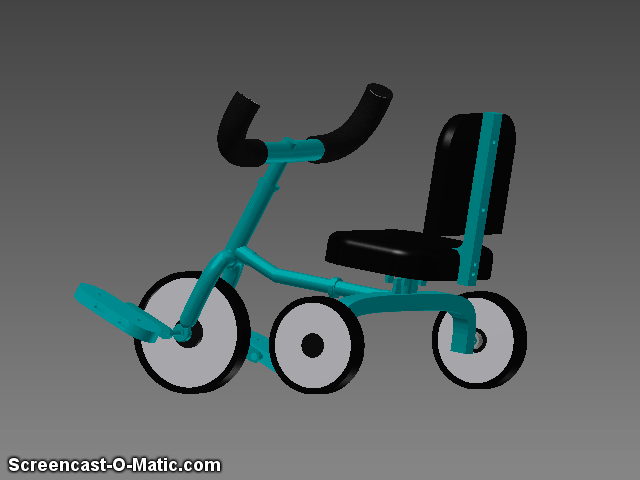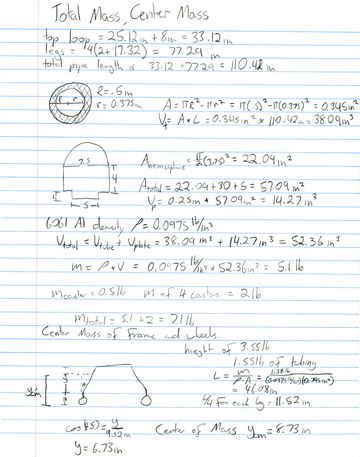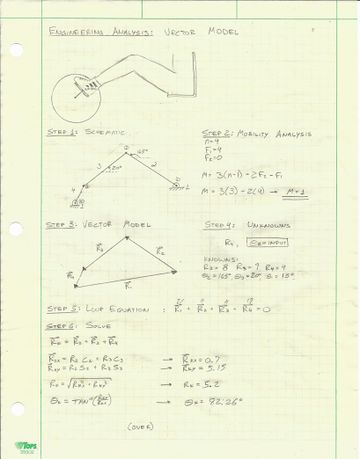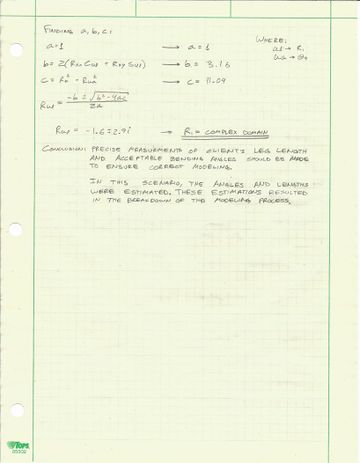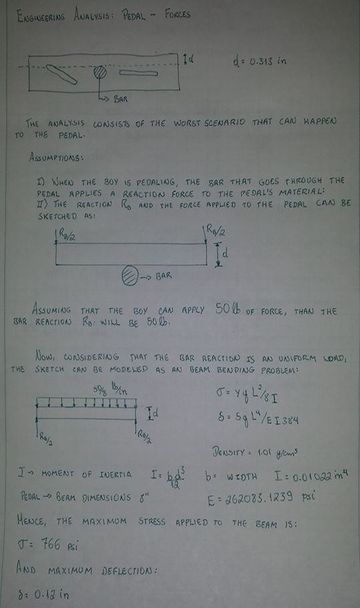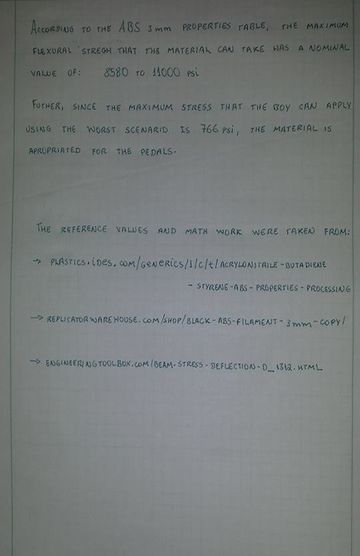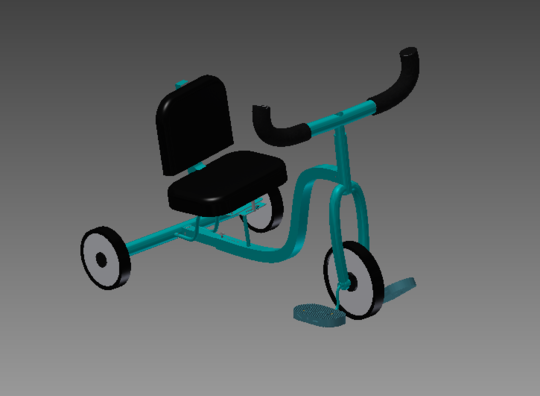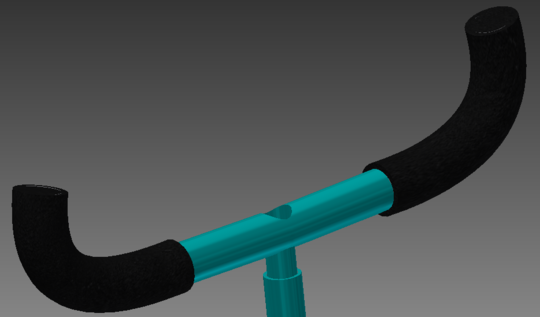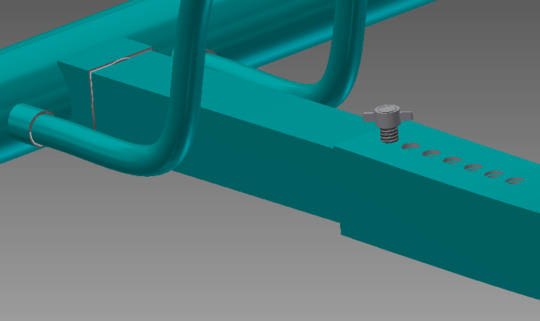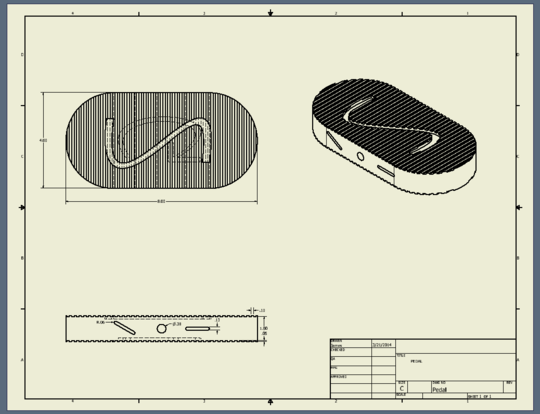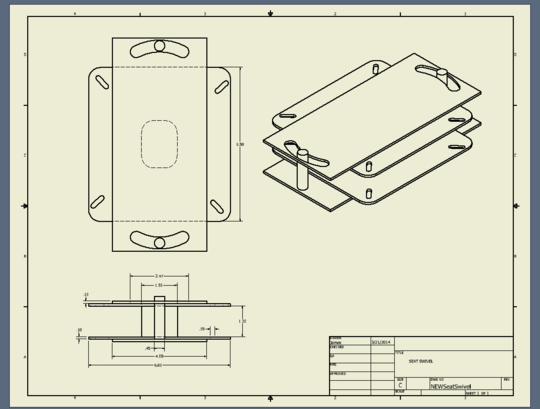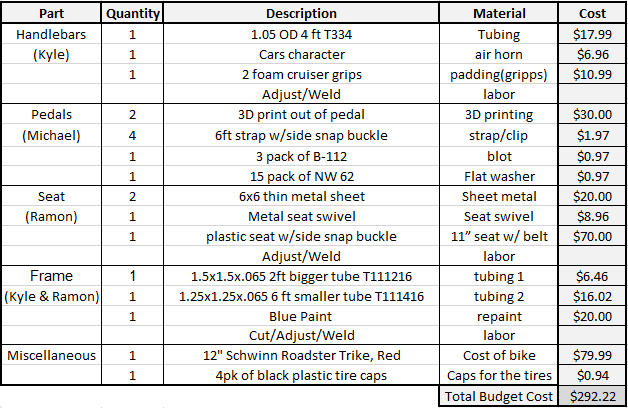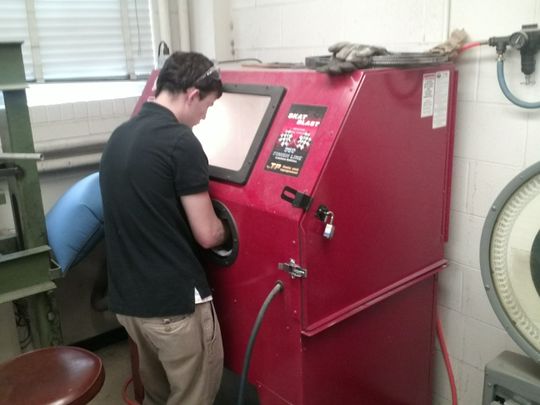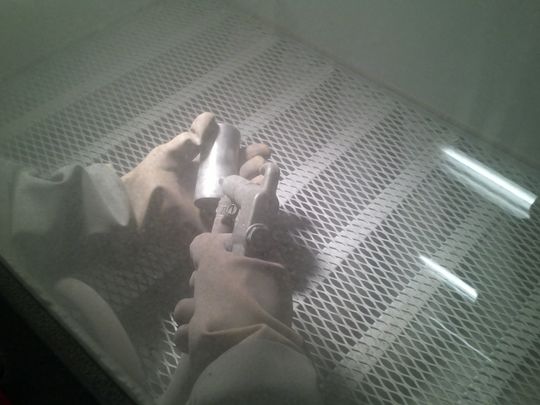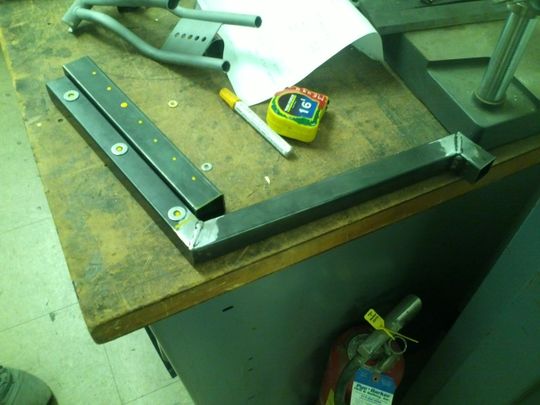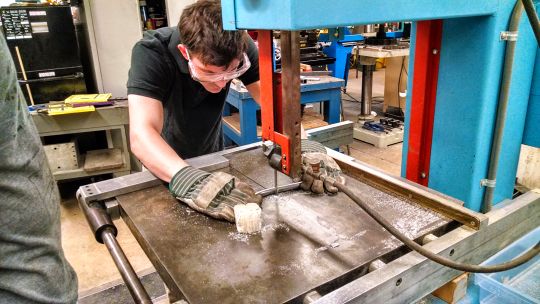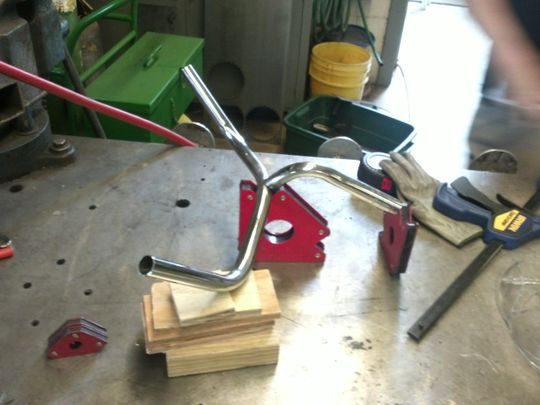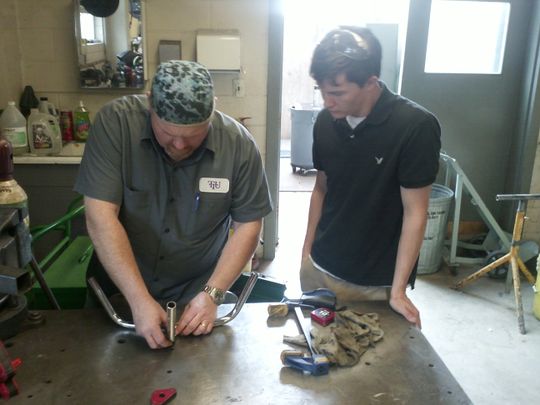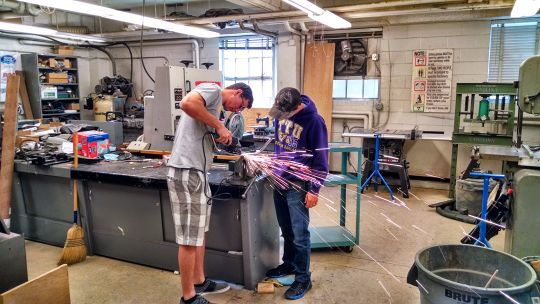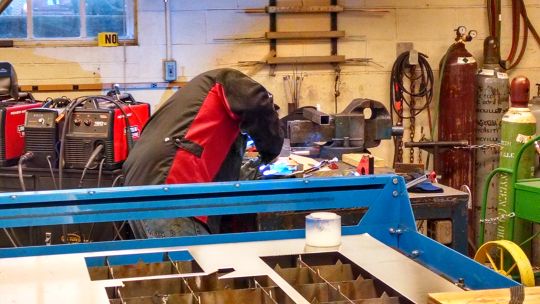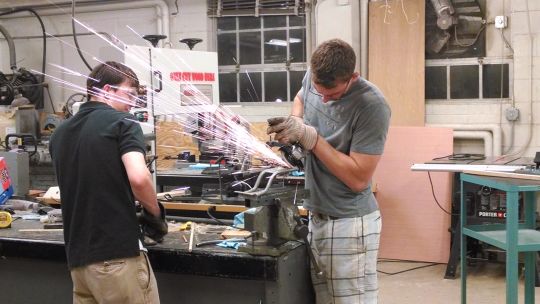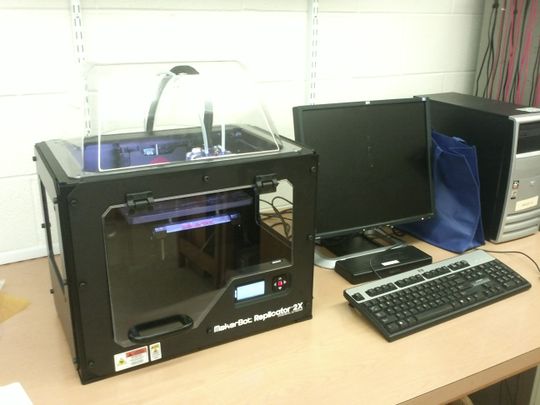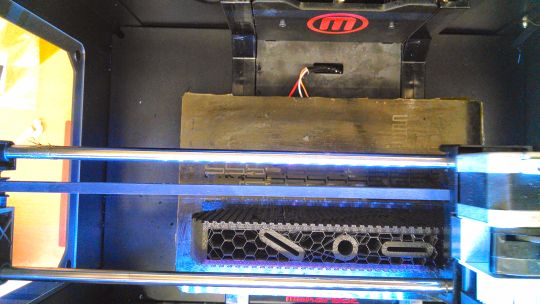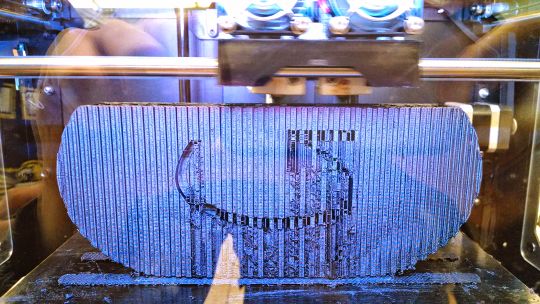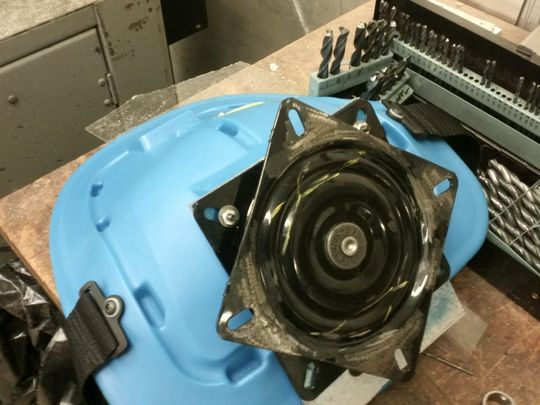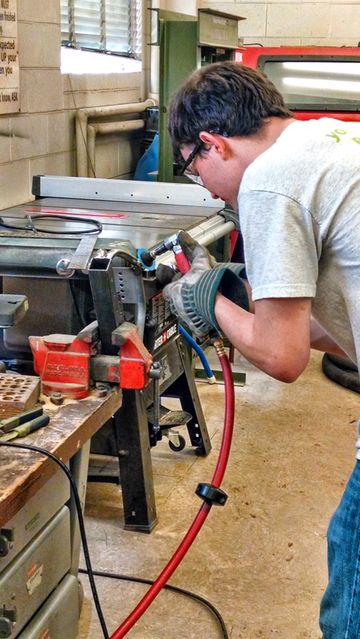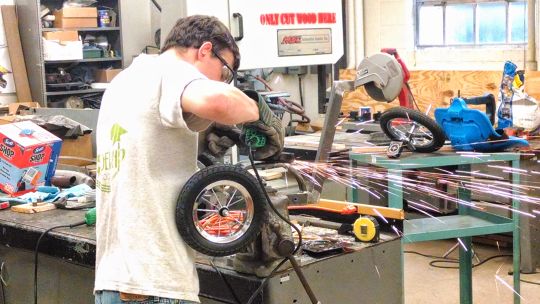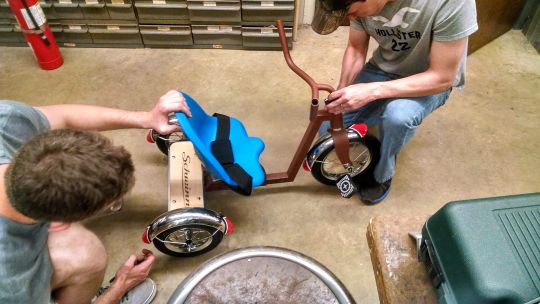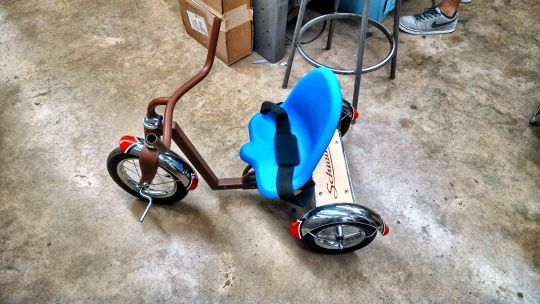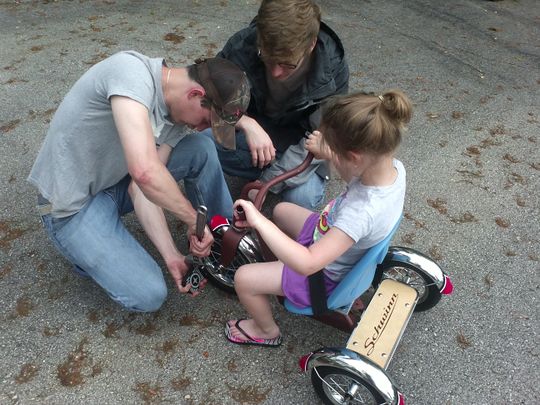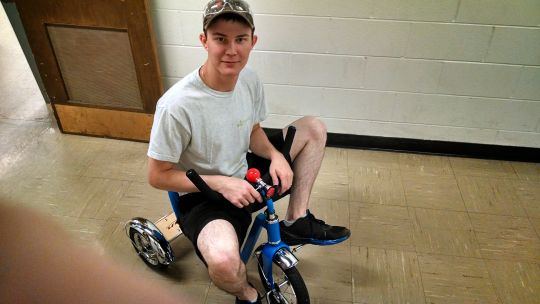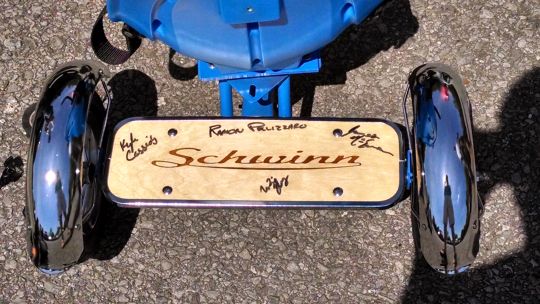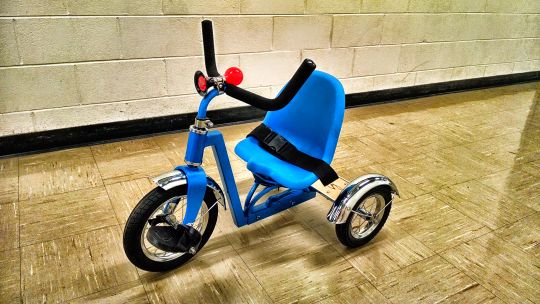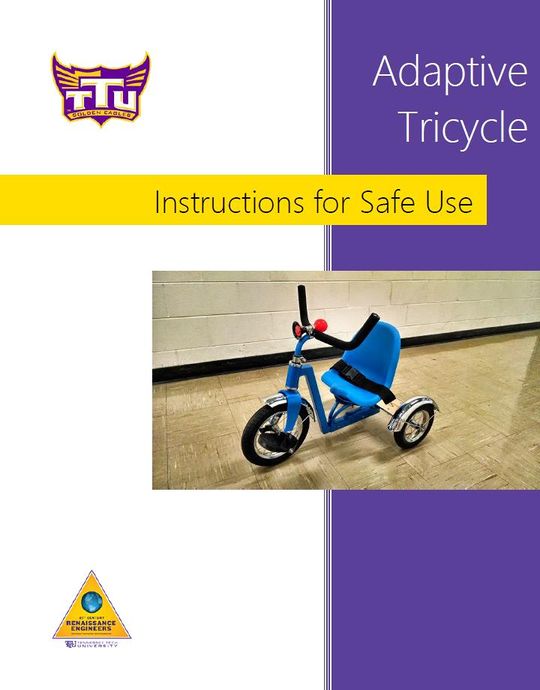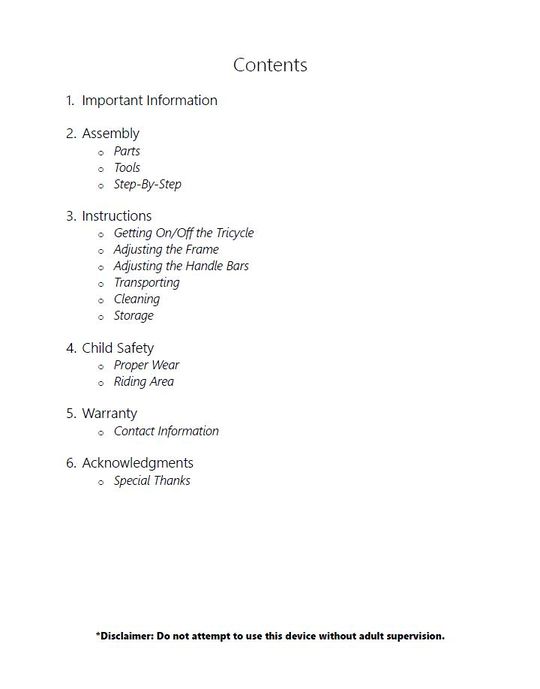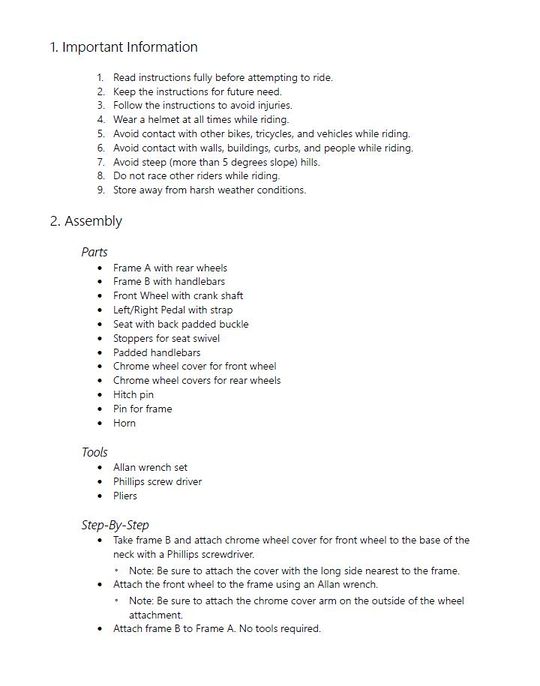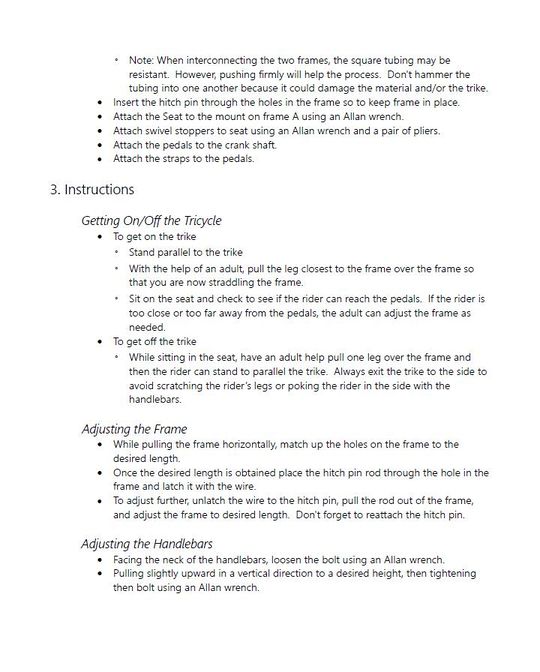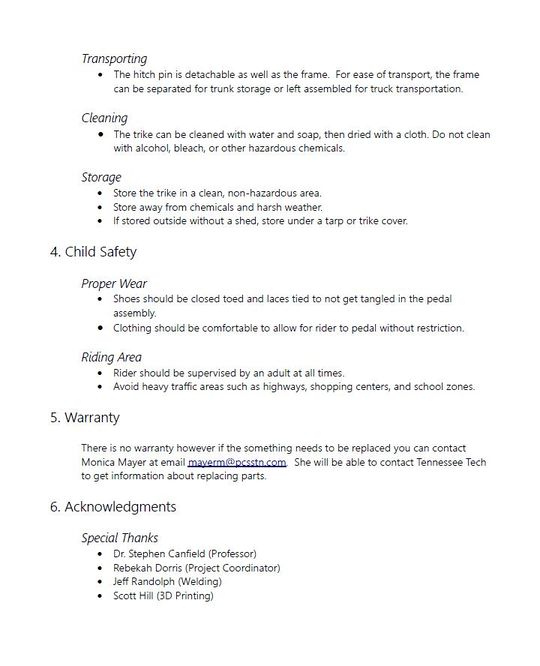Adaptive Tricycle for 6 year old S14
Contents |
Abstract
Design and build an adaptive tricycle for a six year old with arthrogryposis.
Team members
- Kyle Cassidy - Design Specialist
- James McEwen - Modeling Expert
- Ramon Pellizzaro - Head Editor
- Leilani Young - Research Analyst
Problem Statement and Overview of the Need
The client is a six year old kindergartner with arthrogryposis. He has limited hip, knee, and ankle movement, as well as minimal grip strength in his left hand. His school has an adaptive tricycle that he uses regularly to exercise and play. His therapist requested that an adaptive tricycle be built for home use. The tricycle should be of similar proportions to the one currently available at the school. It should also be durable, easy to use and maintain, have a seat belt, pedal straps, a seat that slightly swivels, and have a frame that is adjustable in length and height.
Design Specifications
Wheel
- Front wheel must be proper size with respect to the pedal length to optimize resistance and movement speed
- Back wheels should be small (diameter < 7 in) to prevent hindering caretakers
- Tires should be made of rubber to ease locomotion on pavement and sidewalks
Pedals
- Should accommodate for foot growth
- Need multiple straps to keep his feet steady as he creates torque
- Should rotate freely enough to allow for constant 30o angle with respect to the horizontal throughout pedaling cycle
Seat
- Regular seat (width ~ 14 in) with back brace and seat belt
- Padding should be both comfortable and weather resistant
- Should have modification which allows caretakers to easily adjust seat back to account for growth
Handle Bar
- Design will be optimized for his lack of right-arm function, and minimal left-arm grip strength
- A farmer's fork design will be used to prevent any leg interference
- Grip (diameter ~ 2 in) will be wide enough for client to rest his wrists on top of handle bars and still have control
- Padding should be optimized for both comfort and durability
Aesthetics
- Light blue frame with black wheels, pedals, seat, and padding
- Batman and CARS decals on smooth surfaces
Accessories
- Air horn positioned on left portion of handlebar which would escalate fun-factor and assist in strength development.
Miscellaneous
- The boy's knees only allow for roughly 30o of movement. To accommodate for this, the pedals will be far away from his body (~ 26 in). The seat will be adjustable to keep the tricycle relevant as he grows. All materials will be ordered with the primary goal of being robust, durable, and maintenance-free. His parents' are not tall so, will don't believe he will not reach a height exceeding 5'8". If designed and assembled properly, this tricycle has the potential to serve him as a therapeutic and fun device.
Conceptual Design
The product will be built using a mixture of existing tricycle parts that are rigid, durable, and easy to use. These differing components will be assembled and adjusted to meet the client's specifications.
Design Concept 1
Design Concept 2
Design Concept 3
Evaluate Concepts and Select a Candidate
Every concept part was analyzed to determine which would better suit the needs of the client.
- Ease of Use: Operation and adjustments are intuitive, i.e., they should not require training to perform.
- Durability: Materials and design should withstand heavy use and have an extensive lifespan.
- Safety: Should prevent accidents from happening and provide protection to the rider.
- Aesthetics: Visually pleasing for an overall striking design.
.
Design and Analysis
The frame will be ordered and modified in the following ways:
- The main frame will be cut and modified to allow adjustable horizontal extension as the client grows.
- The handle bar frame will be cut and be modified to allow vertical adjustment as is needed.
- The base of the seat will be adapted with a custom-made mechanism to allow short side-to-side swivel rotation.
- The pedals will be modified with straps to keep the client’s foot secure to the pedal at all times.
Description of Selected Design
The design selected is based on the rating of each part as shown in the table above. The chosen frame is made of square steel tubing for its strength, durability, and weldability. The main frame beam will consist of a smaller tube inside the larger original tube so that the length of the frame is adjustable to compensate for growth. The seat will be made of a hard plastic and be able to rotate slightly. This slight rotation will aid in the process of gaining momentum to ease pedaling. Although the seat mount will be welded to the frame, growth will not affect the ability to ride due to the adjustable frame. The handlebars selected allow for easy steering even with minimal gripping strength, by utilizing curved up handles. These handlebars will also be adaptable to growth by having the ability to raise in height so that knee clearance is not an issue. Lastly, the pedals chosen have a large base to help with stability and buckle straps to constrain the foot to the pedal easily.
Inventor Model
Detailed Description of Selected Design
Frame
- Square steel tubing was chosen for its strength, durability, and adjustability characteristics. The main frame beam will consist of a small tube tight inside another making the length of the frame adjustable to compensate for growing. Furthermore, a wide rear base will be used to prevent tipping.
Seat
- The seat will be purchased fully made. It will consist of hard plastic as well as a seatbelt strap, clip and padding to prevent pinching. The seat will have a limited rotation, which will aid in the client's process of gaining momentum and ease pedaling. This limited rotation will be obtained by mounting a seat swivel to the bottom of the seat and welding it to the frame. Although the seat mount will be welded to the frame, its adjustable design will account for the client's growth.
Handlebar
- The handlebar that was chosen allows for easy steering with minimal grip strength via a curved design. The curved handle bars allow steering to be done with the wrists rather than having to grip the handlebars with the hand. For comfort, a foam grip will be on the handlebars around the curved section and along the horizontal piece to rest the wrists. Also, a horn will be mounted with a character from a popular animated movie. The handlebars will also be adaptable to growth by having the ability to rise and lower in height such that growth and knee clearance are not a factor.
Pedals
- The pedals will be 3D printed using ABS plastics, will contain a large base to help with stability and nylon straps with plastic buckles to constrain the foot to the pedal. The pedal bar will be located in the center of the pedal, penetrate the entire length of the pedal and be secured on the other side with a strap in front of and behind it. The back strap is at a thirty degree angle to help aid in strap comfort on the ankle while the front strap will go over the top of the foot.
Analysis
Describe three types of analysis to be performed on the design
Engineering Analysis 1
Engineering Analysis 2
Engineering Analysis 3
Inventor Drawings
Bill of Materials
Fabrication and Testing
Instructions for Safe Use
Conclusion
In closing, this project was a joy and pleasure to do. It taught us innovation, creativity, and how to work as a team. For each member of our team there was a given task and a deadline. As in real life, sometimes this task was not completed and the team had to pull together and deliver what was needed. The lesson behind that would be time management. Having a well thought out plan of action, a list of tasks to be completed, and people assigned to those tasks are key to having great time management. We also learned that communication is the most important requirement in any project. If you cannot communicate with one another, then nothing will get done and your client will suffer from that. Communication with your team is as equally important as it is with your client. If communication is lacking between the client and the engineer, then you may end up with a mechanism that they cannot use or did not want. It is important to keep them updated so that you know you are on the right path to giving the client what they asked for. Professionalism is another lesson to be learned from a group project. As co-workers, you should always be professional and respect one another. In a group project, there is usually one person that does not respect the opinions of others and never gives others the opportunity to express their ideas. However, within our group that never occurred. We each had our own opinions, as well as criticisms, but generally we decided as a group on each aspect of the project. Overall, the project taught us how good it feels to help those with disabilities, especially since it can be difficult for families to provide specialty items, such as this one, because of financial issues. So, being able to provide a tricycle to a family with a child that is disabled, for exercise or any other purpose, is overwhelmingly joyful.
